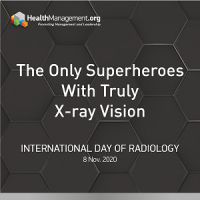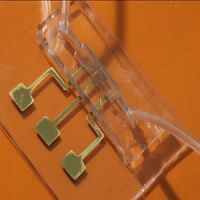When the World Health Organization (WHO) declared the SARS-CoV-2 COVID-19 a pandemic, healthcare facilities were urged to reschedule non-urgent outpatient visits and to accelerate high priority screening and intervention needs due to an expected influx of COVID-19 patients. Elective surgeries were also rescheduled, and elective, urgent inpatient diagnostic and surgical procedures were shifted to outpatient settings.
In radiology, diagnostic imaging procedures and interventional radiology procedures are divided into three categories: urgent, semi-urgent and non-urgent. Because of the COVID-19 pandemic, most non-urgent appointments were rescheduled. Semi-urgent cases were processed on a case to case basis. Only urgent appointments were kept. All cancer-related appointments and therapies that were classified as urgent or semi-urgent were continued. Diagnostic radiologists worked remotely, and some interventional radiology practices created teams of physicians, nurses, technologists and trainees to minimise the risk of cross-contamination.
However, this dramatic change in case volume and restricted scheduling could have a significant impact on trainee education and exposure. Measures that have been implemented during COVID-19 to prevent exposure and contamination could negatively affect trainee participation in clinical care and in-person teaching. As many countries now enter the second wave, the duration of these restrictions is likely to be prolonged.
A study was conducted to assess the impact of the COVID-19 pandemic on aspects of diagnostic and interventional radiology education and to suggest measures that could be undertaken to preserve or even enhance the trainee experience during these challenging times.
In the study, researchers reviewed diagnostic radiology studies and interventional radiology procedures at a single tertiary-care teaching institution between 2015 and 2020. The programme had 25 diagnostic radiology residents, 10 diagnostic radiology fellows and 5 interventional radiology fellows. Also, there were 35 diagnostic radiology attending faculty members and 10 diagnostic radiology attending faculty members at the affiliated VA hospital and 10 interventional radiology attending faculty members.
Findings show that there was a significant difference in overall caseload from January through April 2020 in both diagnostic radiology and interventional radiology. In diagnostic radiology, cases for body imaging, neuroradiology, and women's imaging decreased quite significantly compared to the same months in the past five years. Interventional radiology procedures (neuro, arterial and core procedures) all decreased quite significantly compared to the same months in the past five years. Cancer-related interventions did not experience a significant reduction. At the trainee level, there was a 51.9% reduction in interventional radiology fellow caseload compared to the same months in the past five years and a 47.8% reduction compared to the first three months of 2020.
Significant reductions in case volume could impede the ability of radiology residents to fulfill graduation requirements. While web-based live conferences and recorded lectures have replaced in-person supervision, feedback and didactics, the effectiveness of virtual studying in diagnostic radiology and interventional radiology remains unclear. For fellows in interventional radiology, the significant decline in hands-on training could have significant consequences, especially because there is no sufficient evidence to support the validity of remote and simulated learning in interventional radiology.
Overall, there are many unknowns when we talk about trainee education in diagnostic and interventional radiology. However, since there are very limited options, the innovative use of existing technologies could help make these virtual learning experiences better. The use of recorded/live cases, online lectures with live and on-demand screening, digital repository for educational cases, virtual journal clubs, wider adoption of standardised online tools and simulator-based training and assessment could increase the effectiveness of remote learning strategies for radiology residents and trainees.
Source: Academic Radiology
Image Credit: iStock



























